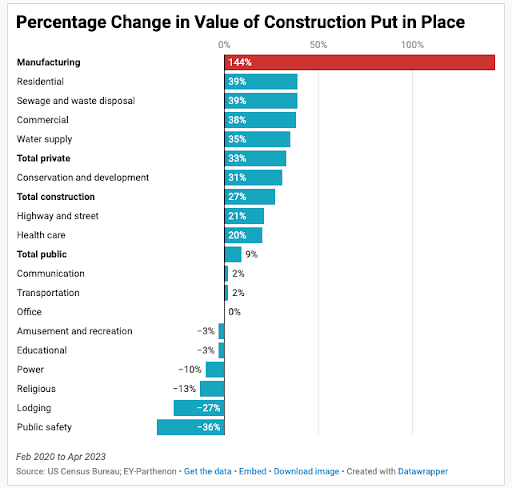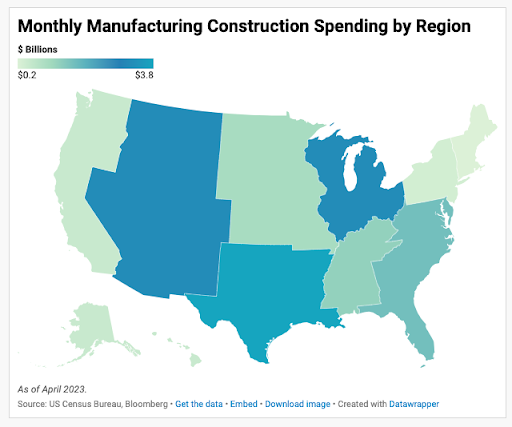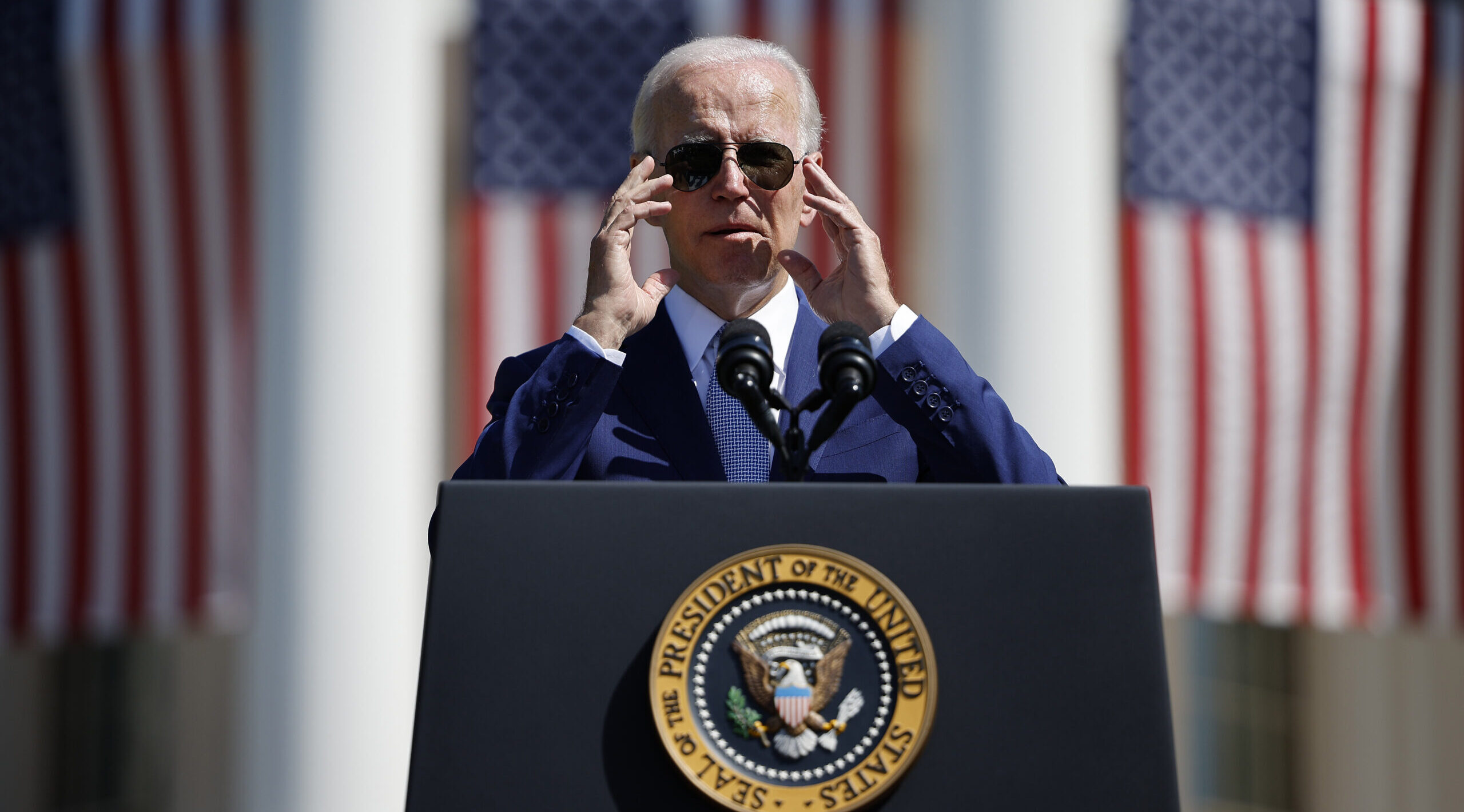The decline of American manufacturing has been a cause for concern for decades. A point of focus for Donald Trump’s 2016 presidential campaign, his successor Joe Biden has — ironically — continued and expanded this agenda for reshoring manufacturing.
As part of his plan to “build back better”, Biden pushed through the Inflation Reduction Act (IRA) and the CHIPS and Science Act (CHIPS), which were designed to promote economic activity in domestic manufacturing — mainly green energy technology and semiconductors. Most importantly, both sets of legislation provide significant government subsidies to these sectors.
To understand if this initiative is having any effect on the market, a helpful proxy is current construction spending in manufacturing in the US. From February 2020 to April 2023, total construction spending saw a 27% increase. Within that field, manufacturing grew by a whopping 144%, with construction spending increasing by about $122 billion. This is unquestionably a significant jump, but is it going to Biden’s preferred sectors?

The CHIPS Act put a heavy emphasis on semiconductors because of geopolitical concerns. Consequently, more than 40% of recent manufacturing construction spending is in the computer/electronic/electrical (CEE) sector, which includes semiconductors. When examining the trends across these sectors, CEE appears to be driving almost all of the growth in construction spending. This means that increased activity in the semiconductor industry is happening, as far as construction of factories is concerned.
In an effort to de-risk its dependence on Taiwan as a semiconductor source, the US has made efforts to transfer Taiwanese operations, labour and capital to America. For example, the Taiwanese have broken ground on a massive semiconductor plant in Arizona that was spurred on by Trump’s strategy and continued by Biden, representing a clear boost in US manufacturing competitiveness. This project makes up a large part of the US mountain region’s $3.2 billion in recent monthly spending.
The fabled US Rust Belt has seen a relatively smaller share of spending. These areas tend to vote Democrat but also were prime locations for Trump-style populism. Rather, it is the bigger southwestern area led by Arizona and Texas that has been on the radar of American industrialists as a replacement for the Rust Belt due to its lower tax, labour, and energy costs.
With supercharged investment, this area could start to shift the poles of America’s economy from San Francisco and New York to Phoenix and Austin. It’s uncertain, though, whether the historic legacy of Republican voting patterns in these states dictates the future course of American political leadership, or if success breeds Democrat dominance.

At least for now, Biden is building. Whether he is building back better is another question. America’s overarching goal is to stop Chinese dominance of these industries, yet there’s a scenario in which Biden’s subsidies actually end up circulating back to help China grow and compete against its Western rival. What’s more, dislodging China from the supply chain dominance of the global economy involves more than just building semiconductor chips. In terms of inputs, the US has an inadequate approach to securing domestic critical materials of which China is a very dominant supplier.
In terms of outputs, many of the chips produced from these new American factories will just end up being exported to China for the final assembly of manufactured goods. This strengthens the Chinese economic ecosystem and casts light on the lack of such a holistic ecosystem within the US.
The legacy of American deindustrialisation has left the country with insufficient skilled manufacturing workers, a situation compounded by the comparatively lacklustre emphasis on building a worker education and retraining pipeline for these factories. Biden’s agenda of building back better through the IRA and CHIPS Acts may be progressing in some areas, but what is still not proven is whether this construction spending can translate into robust economic growth and security that prevents China from superseding America. This remains a monumental challenge — and the jury is out on whether the President can succeed.











Join the discussion
Join like minded readers that support our journalism by becoming a paid subscriber
To join the discussion in the comments, become a paid subscriber.
Join like minded readers that support our journalism, read unlimited articles and enjoy other subscriber-only benefits.
Subscribe